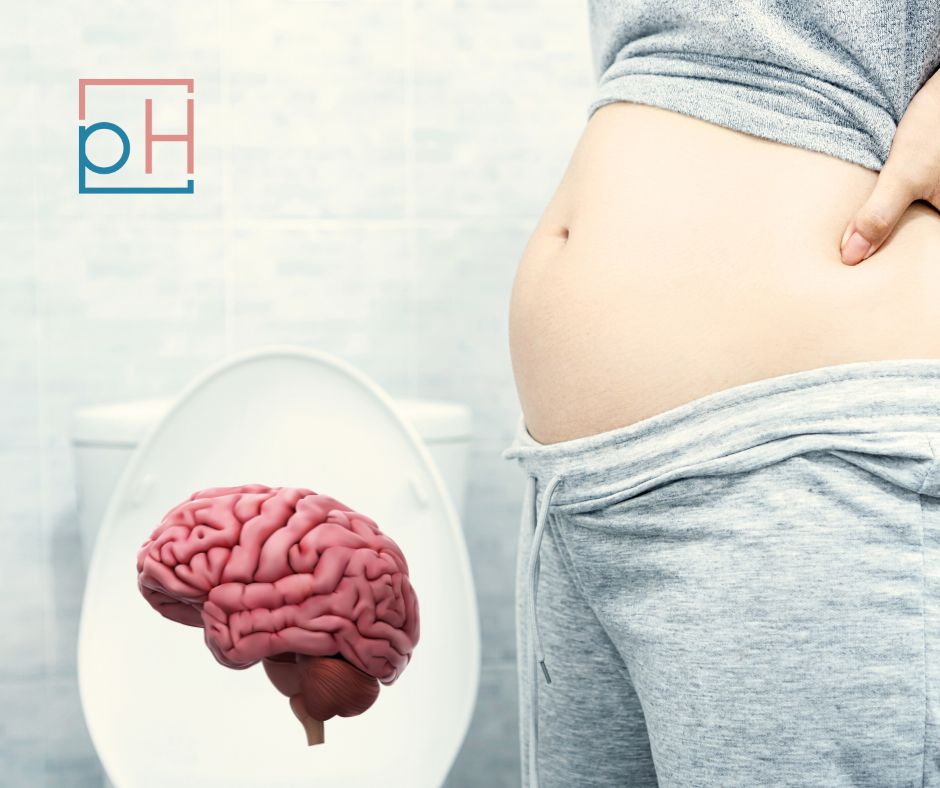Alzheimer’s is diagnosed by going through a medical history, ruling out other possible causes that could explain your dementia-like symptoms, administering imaging tests, and looking for biomarkers that indicate the progression of Alzheimer’s.
Alzheimer’s disease is a serious neurodegenerative condition that is the result of chronic inflammation that leads to tau tangles and beta-amyloid plaque buildup in the brain. This progresses to mild cognitive impairment, then more serious dementia symptoms, such as memory loss and decreasing mobility.
The National Institute on Aging points out that Alzheimer’s is the sixth-leading cause of death in the US, but the third leading cause of death in older Americans. In Japan and the UK, it’s the #1 cause of death.
According to the Alzheimer’s Association, an estimated 1 in 10 older adults (above the age of 65) have Alzheimer’s disease. 1 in 3 Americans over the age of 85 have Alzheimer’s dementia.
Diagnosing Alzheimer’s can be done by a neurologist, a neuropsychologist, a geriatrician, or even your primary doctor if they have prior experience with diagnosing types of dementia.
Alzheimer’s cannot be truly diagnosed until after death by meticulously examining brain tissue in an autopsy.
However, there are biomarkers and helpful indications that aid physicians in diagnosing Alzheimer’s disease to the best of their ability, such as amyloid particles in blood plasma or cerebrospinal fluid.
Most Alzheimer’s patients live an average of 4-8 years after their diagnosis, but that life expectancy increases if a diagnosis is achieved in the early stages.
Alzheimer’s doesn’t just affect the patient’s memory. They slowly lose the ability to carry out daily tasks. Often, family members become full-time unpaid caregivers for the Alzheimer’s patient — valued at about $250 billion every year in the US. Getting an early diagnosis can help your family, too.
The memory problems of dementia and Alzheimer’s go beyond just a normal part of aging.
Read below to learn more about the specifics of how to get diagnosed for Alzheimer’s disease.
Want to prevent Alzheimer’s using a plan that works… without breaking the bank? Get our guide to the Bredesen Protocol on a budget for $29.
Early Signs of Alzheimer’s Disease
The early signs of Alzheimer’s disease are of the utmost importance. If you or a loved one has early Alzheimer’s symptoms, and you get an early diagnosis, this increases your chance of prevention and maintaining a high quality of life.
These are some of the early signs your doctor may look for during a diagnosis:
- Memory loss, starting with short-term memory
- Social withdrawal
- Difficulty completing familiar tasks
- Inability to find the right words
- Confusion about time
- Changes in mood and personality
- Trouble planning or problem-solving
- Lack of sense of direction
- Repetition in behavior
Changes in the brain that lead to a loss in cognitive function can begin in your 40’s, long before you’ll have noticeable symptoms. The sooner you notice early warning signs of Alzheimer’s, the sooner you can start preventing Alzheimer’s disease.
About 5% of Alzheimer’s cases occur before the age of 65. This is called early-onset Alzheimer’s, or younger Alzheimer’s disease.
How is early-onset Alzheimer’s diagnosed? Early-onset Alzheimer’s is usually diagnosed by a doctor who specializes in Alzheimer’s disease since most doctors won’t look for warning signs of Alzheimer’s in individuals younger than 65. This specialist doctor will likely administer a comprehensive medical exam, symptom checklist, cognitive tests, and brain imaging for diagnosis.
Physical & Neurological Exam
A specialist may administer physical or neurological exams to rule out certain conditions. Unfortunately, there is not a single diagnostic test that can get you diagnosed for Alzheimer’s, so doctors rely on other tests to rule out any other condition that could explain the dementia-like symptoms.
Administering physical exams when you suspect Alzheimer’s disease is largely used to rule out other conditions that could be causing your dementia symptoms. These dementia-like symptoms may be caused by depression, untreated sleep apnea, side effects of pharmaceuticals, or certain vitamin deficiencies.
Physical exams for diagnosing Alzheimer’s disease may include:
- Measuring blood pressure, temperature, and pulse
- Monitoring heart and lungs for abnormalities
- Collecting blood samples or urine samples for lab testing
- Reviewing what medications you’re taking (have a list of your medications ready)
- Talking about your sleep habits (perhaps even a sleep study)
- Going through your diet, nutrition, and alcohol consumption
With a neurological exam, doctors can rule out neurological conditions that could be causing your dementia-like symptoms. These conditions may include tumors, fluid accumulation on the brain, Parkinson’s, or strokes large and small.
Neurological exams for diagnosing Alzheimer’s may include:
- Testing reflexes
- Checking coordination
- Measuring muscle tone and strength
- Tracking eye movements
- Evaluating speech
- Brain imaging
Mental Status Testing
A doctor may administer mental status testing to measure memory, thinking problems, problem-solving, awareness, and general mental health markers.
The MMSE (Mini-Mental State Exam) is a series of questions that test an individual’s everyday mental skills. Scoring a perfect 30 means there is no dementia. A score of 20-24 indicates mild dementia. A score of 13-20 indicates moderate dementia. Lower than 12 suggests severe dementia.
The Mini-Cog test is two tasks that individuals are asked to complete. First, you draw a clock with the numbers correctly placed and a time specified by the physician giving the test. Then, you’ll repeat the names of 3 objects you were told before drawing the clock. These results inform whether further evaluation is warranted.
A mood assessment is when a doctor evaluates an individual’s sense of well-being and looks for depression or other mood disorders that may lead to dementia-like symptoms.
Computer-based mental status tests include:
- Cantab Mobile
- Cognigram
- Cognivue
- Cognision (prides itself on ease of use in clinical trials)
- Automated Neuropsychological Assessment Metrics (ANAM)
Lab Tests & Imaging
No lab test provides a definitive way to get Alzheimer’s diagnosed. Lab tests and structural imaging are usually used to rule out other conditions that could be causing dementia-like symptoms.
Examples of lab tests and brain scans that a doctor may order to contribute to an Alzheimer’s diagnosis include:
- CT scan (computed tomography — basically a sophisticated x-ray)
- SPECT (single positron emission computed tomography)
- MRI (magnetic resonance imaging), which uses powerful radio waves
- Functional MRI (fMRI)
- MRS (magnetic resonance spectroscopy)
- PET (positron emission tomography), which can specifically look for amyloid plaque and tau tangles
Does Alzheimer’s show up on MRI? No, Alzheimer’s does not show up on an MRI. However, a PET scan can indicate beta-amyloid plaque buildup. This can help inform an Alzheimer’s diagnosis, or rule it out if there are no signs of amyloid plaque buildup.
Is there a blood test for diagnosing Alzheimer’s? Yes, there is a blood test for diagnosing Alzheimer’s, although experts are concerned about accuracy since full test results have not been made public.
As of November 2020, C2N Diagnostics sells a simple blood test (PrecivityAD test) for $1,250 that detects amyloid particles, as well as proteins that suggest increased genetic risk for Alzheimer’s. This blood test has yet to attain FDA approval and is not covered by Medicare.
Genetic Testing
Genetic testing may help you understand your risk of Alzheimer’s disease. However, no genetic test can offer a definitive diagnosis of Alzheimer’s.
Researchers have identified certain genes that indicate an increased risk of developing Alzheimer’s disease. Researchers have also identified extremely rare genes that directly lead to Alzheimer’s.
Experts do not recommend routine genetic testing to get diagnosed for Alzheimer’s.
Abnormalities (mutations or variants) with the following genes may increase your risk of Alzheimer’s:
- APOE-e4 (for which there is a blood test)
- ABCA7
- CLU
- CR1
- PICALM
- PLD3
- Some variations of SORL1
- A rare variant of TREM2
- APP (risk factor for early-onset Alzheimer’s)
- PSEN1 (risk factor for early-onset Alzheimer’s)
- PSEN2 (risk factor for early-onset Alzheimer’s)
Conditions to Rule Out
17 conditions to rules out when getting diagnosed for Alzheimer’s disease:
- Parkinson’s disease
- Other types of dementia (such as Lewy body dementia)
- Depression
- Thyroid problems
- Stroke
- Brain tumor
- Untreated sleep apnea
- Excessive alcohol use
- Delirium
- Kidney problems
- Liver problems
- Heart problems
- Lung problems
- Urinary infections
- Fluid accumulation on the brain
- Certain side effects of medications
- Certain vitamin deficiencies
Home Tests to Diagnosis Alzheimer’s
No home test can effectively get you diagnosed for Alzheimer’s disease. However, there are at-home tests that help your doctor know whether to look into more effective Alzheimer’s diagnostics.
At-home tests that may indicate the development of Alzheimer’s or increased risk of Alzheimer’s:
- SAGE test
- Mini-Cog test
- Genetic Health Risk (GHR) test
Can you test yourself for Alzheimer’s? No, you cannot effectively test yourself for Alzheimer’s disease. There are no definitively reliable home diagnostic tests for Alzheimer’s disease.
However, if you or a loved one exhibits early signs of Alzheimer’s disease, seek medical advice from a qualified healthcare professional right away. The earlier you get an Alzheimer’s diagnosis, the better your chances are for prevention and maintaining your quality of life.
With Alzheimer’s disease, prevention is key.
There are many ways to get diagnosed for Alzheimer’s, although a definitive diagnosis cannot be achieved except in an autopsy, where brain tissue can be precisely examined. Typically, doctors use various tests to rule out conditions that could explain dementia-like symptoms.
Patients diagnosed with Alzheimer’s disease live another 4-8 years, on average, after their diagnosis.
However, you don’t have to sit back and wait for Alzheimer’s to take its toll. Some patients live up to 20 years after their diagnosis!
Because most — if not all — conventional dementia treatments have about a 1% chance of success, the need for a revolutionary new approach is critical for treating dementia and Alzheimer’s.
Want to prevent Alzheimer’s using a plan that works… without breaking the bank? Get our guide to the Bredesen Protocol on a budget for $29.
Sources
- Qiu, C., Kivipelto, M., & von Strauss, E. (2009). Epidemiology of Alzheimer’s disease: occurrence, determinants, and strategies toward intervention. Dialogues in clinical neuroscience, 11(2), 111. Full text: https://www.ncbi.nlm.nih.gov/pmc/articles/PMC3181909/
- Adlard, P. A., Tran, B. A., Finkelstein, D. I., Desmond, P. M., Johnston, L. A., Bush, A. I., & Egan, G. F. (2014). A review of β-amyloid neuroimaging in Alzheimer’s disease. Frontiers in neuroscience, 8, 327. Full text: https://www.ncbi.nlm.nih.gov/pmc/articles/PMC4215612/
- Chan, C. C., Fage, B. A., Burton, J. K., Smailagic, N., Gill, S. S., Herrmann, N., … & Seitz, D. P. (2019). Mini‐Cog for the diagnosis of Alzheimer’s disease dementia and other dementias within a secondary care setting. Cochrane Database of Systematic Reviews, (9). Full text: https://www.cochranelibrary.com/cdsr/doi/10.1002/14651858.CD011414.pub2/full
- Gustafson, C. (2015). Dale E. Bredesen, MD: Reversing Cognitive Decline. Integrative Medicine: A Clinician’s Journal, 14(5), 26. Full text: https://www.ncbi.nlm.nih.gov/pmc/articles/PMC4712873/

















